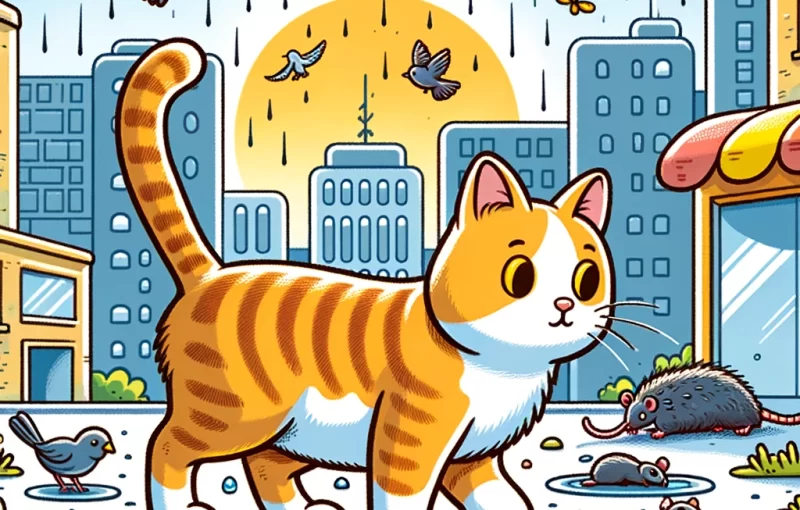
The Hidden Dangers of Toxoplasmosis: A Wake-Up Call for Pet Owners
by Jon Scaccia May 8, 2024In an era where climate change poses an ever-increasing number of challenges, not only to our ecosystems but also to the health of both humans and animals, recent research highlights a growing concern for pet owners worldwide. A detailed study published in the PLOS ONE journal has unearthed critical insights into the spread of Toxoplasma gondii, a parasite that, while often overlooked, poses significant risks to both domestic pets and wildlife.
What is Toxoplasma Gondii?
Toxoplasma gondii, often simply referred to as T. gondii, is a parasite capable of infecting any warm-blooded animal, though it only reproduces sexually in cats—both domestic and wild varieties. What makes this parasite particularly daunting is its ability to affect hosts globally, from remote islands to the Arctic Circle. The global cat population, estimated to be around 600 million, serves as the primary host for this parasite, playing a pivotal role in its life cycle and the spread of the disease known as toxoplasmosis.
Toxoplasmosis: A Global Health Concern
Toxoplasmosis can range from a mild to severe disease in humans and animals. It poses a particular threat in areas with diverse T. gondii strains, like South America, where environmental contamination and large populations of free-ranging cats exacerbate the spread. The disease can cause significant financial burdens due to livestock losses and is known to affect marine wildlife, with the parasite reaching marine environments through soil runoff.
The Study: Unraveling Patterns of Parasite Spread
The recent study explored the relationship between climate change, human activity, and the prevalence of T. gondii in free-ranging cats. Using data collected globally, researchers analyzed various factors, including temperature, precipitation, and human population density, to determine their impact on the shedding of T. gondii oocysts (eggs) by cats.
The findings revealed that human population density is a significant factor, suggesting that areas with higher human activity see more frequent oocyst shedding. This is likely due to the increased numbers of stray and feral cats in densely populated areas. Moreover, warmer temperatures and changes in precipitation patterns also seem to influence oocyst shedding, albeit indirectly.
What Does This Mean for Pet Owners?
These findings have significant implications for pet owners, especially those with cats. Outdoor cats and those in high-density areas are at a greater risk of contracting and spreading toxoplasmosis. This poses a risk not only to other animals but also to humans, particularly pregnant women and immunocompromised individuals.
Preventive Measures:
- Regular Veterinary Checks: Ensure your pets are regularly checked and treated for parasites.
- Hygiene Practices: Handle pet waste carefully and maintain cleanliness to prevent the spread of oocysts.
- Responsible Pet Ownership: Keep cats indoors to reduce the risk of infection and limit the spread of the parasite to the environment.
Towards Better Management and Policy
The study’s insights are crucial for developing targeted interventions to manage the spread of toxoplasmosis. Policies focusing on managing stray and feral cat populations in urban areas could be significant in controlling the parasite’s spread. Moreover, educating pet owners about the risks and preventive measures can significantly contribute to public health and safety.
Conclusion: A Call to Action
This study serves as a call to action for pet owners and policymakers alike to address the hidden dangers of toxoplasmosis. As we continue to witness the effects of climate change, understanding and mitigating the risks associated with infectious diseases like toxoplasmosis is paramount.
Let’s take a proactive approach to protect our pets and our communities. Share your thoughts and experiences in the comments below, and join the conversation to raise awareness about this critical issue.
Engage with Us!
- Have you had an experience with toxoplasmosis in your pets?
- What measures do you take to protect your pets and family from such infections?
We’d love to hear your stories and tips!
Leave a Reply